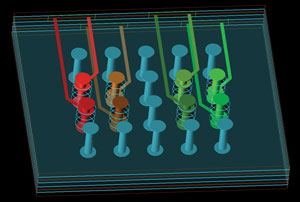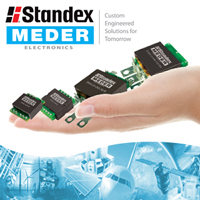Cobham Technical Services has released a new version of its Opera electromagnetics and multiphysics design software that enables design engineers to accelerate analysis time. By harnessing the parallel processing capabilities of multi-core processors, computational time can be reduced using Opera-3d version 16.

Designed for use on standard office-grade PCs, Opera-3d version 16 contains numerous enhancements to take advantage of the multi-core processor architecture offered by many of today’s computers. One of the advanced features in Opera-3d is the accurate method it uses to represent coils. This feature is widely used by scientists and engineers to model complex devices with up to several hundred coils, which can be computationally intensive. The run-time of such complex simulations can be much faster with the new Opera version; for instance, four-times faster using a PC with a quad-core processor has been achieved.
Opera version 16 further extends the multiphysics capabilities of Opera-3d. Electromagnetic, thermal and stress analysis simulation now operate seamlessly, enabling results from one type of simulation to automatically pass to other simulation types. Users can set up a chain of analyses of the same model and solve them sequentially. Shape deformation caused by forces acting on a model can be employed across different types of simulation; the deformed mesh from stress analysis can be nominated for use in subsequent electromagnetic or thermal analyses.
The Opera-2d circuit editor has been extended to include additional functional components. Capacitors and inductors can be defined as fixed components or as functions of any parameter used in the simulation.
Version 16 of Opera-2d and -3d also sees the addition of a new dynamic graphing facility that enables users to generate graphs quickly and easily and with greater control over format and content.
Other major features in the latest version of Opera include the addition of a tool for simulating magnetron sputtering and thin-film coating, and a volume plasma emitter. The magnetron sputtering module can be used to analyze target erosion and utilization, predict substrate coating profiles and evaluate the dynamics of the coating process. The volume plasma emitter captures the behavior of low density magnetized plasmas.



